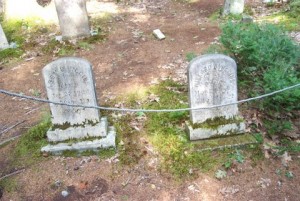The first year we visited Acadia National Park, Melissa was one year old, or at least she had her first birthday in Acadia. Packing for five people for two weeks of camping, one of them a baby, into one station wagon was somewhat of a challenge, but I managed. After that came the ten hour drive to Seawall Campground, on Mount Desert Island, on which is located Acadia. The driving had to be done at night, because we knew the waiting line at the entrance to Seawall could get quite long, stretching sometimes to a hundred yards. The park rangers began admitting people and their vehicles at about 7:30, and the only way available to get at the head of the line, which was necessary if we were to get a campsite sufficiently large for our two tents, was to get there before anyone else. If we left at 6 PM, we stood a good chance of getting to Seawall by 4 AM, possibly not early enough to be first in line, but giving us a shot at second or third. Driving all night also had the advantage of having the kids sleep throughout the entire trip.
Just before getting to Mount Desert Island, I stopped at the Dunkin Donuts (it was open 24 hours a day, and over the years it became a habit) in Ellsworth, one of the many American cities and towns named after heroic but nearly forgotten Colonel Elmer Ellsworth, to pick up a delicious but unhealthy sugary breakfast made up entirely of fat calories, which we ate happily in the car while standing on line at the entrance to Seawall Campground.
At sunrise we walked to the picnic ground, from which we could watch the sun rise out of the waves over a magnificent, rocky beach framed by Douglas firs. Although the mosquitoes began their bloodsucking attack as soon as we got to the beach, they didn’t spoil the spectacle. They just abbreviated it somewhat as we dashed back to our car while we had some blood left. It didn’t take long to meet the people in the car in front of us, or those behind, and for their children to begin playing with ours.
Our first campsite in Seawall was the remnant of an apple orchard. There were no apples, and just three or four trees. They gave little shade but provided wonderful climbing equipment for our kids. Mostly, the site was large and private, although there were other campers in the vicinity. It held a picnic table and a fire pit. A few steps away, there was also a small, overgrown, family graveyard with headstone markers with the name “Higgins” inscribed on them and blurred dates. This really fascinated the kids, and gave rise to discussions about the former inhabitants of what was now our campsite. In the evening, before “Quiet Hours,” (the time designated by park authorities for quiet, after 10 PM) there were other families nearby who had brought guitars and sang songs we knew, and so we joined them, and sat around their campfire, under unbelievably bright stars in their uncountable multitude.
For the kids, there was an additional treat. Just after 10 PM, Park Ranger Bob Foster showed up in full uniform and on his bicycle at our campsite to make sure we observed “Quiet Hours”. While in our campsite, Bob tucked Josh and Jennie into their sleeping bags. Goodnight, park ranger!


